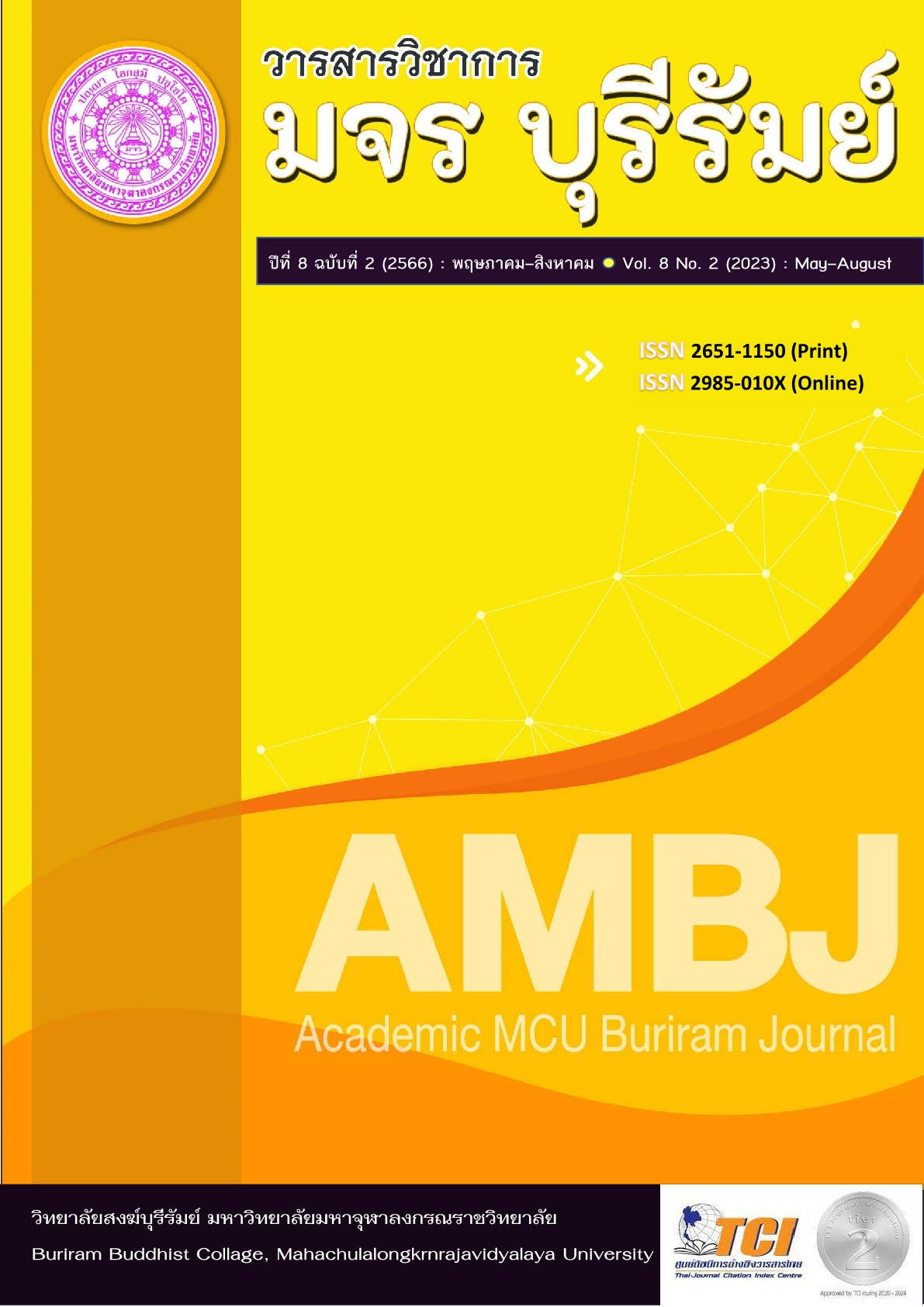A Comparison of The Learning Results Through the Design Thinking Process and Inquiry-Based learning (5E) to Scientific Competencies of Grade 8 Students
Keywords:
Design Thinking, Inquiry-based Learning Management (5E) , Scientific CompetenciesAbstract
The purposes of this research were as follows: 1) to compare the scientific competencies of students who were taught by a design thinking approach before and after learning. 2) to compare the students' scientific competencies between the groups that performed the design thinking approach and those that performed the inquiry-based learning (5E). The samples of this research were grade 8 students at Surathampitak School, under the Office of Secondary Educational Service Area, Nakhon Ratchasima, semester 2, the academic year 2022; there are a total of 70 students divided into learning management through the design thinking of 35 students and inquiry-based learning (5E) 35 students. This study employed a two-stage random sampling. This research took four weeks to collect the data. The data was collected using a randomized control group pretest-posttest design and research tools consisting of a scientific competencies test, 4 Design thinking lesson plans, and 4 inquiry-based learning (5E) lesson plans. Analyzed by descriptive statistics, Mean (M), standard deviation (SD), skewness (Sk) and kurtosis (Ku), Hotelling’s T2, and MANOVA.
The research results found that:
1. The students who were managed by the design thinking process had overall scientific competence. and classified by performance after learning was higher than before learning at statistical significance at the .05 level.
2. The students who received the design thinking learning management process had higher overall and classified scientific competencies after taking the approach than students who acted inquiry-based learning (5E) with statistical significance at the .05 level.
References
จันทร์แสง ประเสริฐศรี. (2561). การพัฒนาการรู้วิทยาศาสตร์ของนักเรียนชั้นมัธยมศึกษาปีที่ 6 โดยใช้การจัดการเรียนรู้ แบบสืบเสาะหาความรู้ร่วมกับการจัดการเรียนรู้ตามแนวคิดวิทยาศาสตร์ เทคโนโลยีและสังคม. ปริญญานิพนธ์ (การวิจัยและพัฒนาศักยภาพมนุษย์). บัณฑิตวิทยาลัย: มหาวิทยาลัยศรีนครินทรวิโรฒ.
ชนิกานต์ กลิ่นอาจ. (2563). วิจัยเชิงปฏิบัติการเพื่อพัฒนาความสามารถในการสร้างสรรค์และนวัตกรรมของนักเรียนชั้นมัธยมศึกษาปีที่ 5 ด้วยการจัดการเรียนรู้ตามกระบวนการคิดเชิงออกแบบ เรื่องเคมีไฟฟ้า. ปริญญานิพนธ์ กศ.ม. (วิทยาศาสตร์ศึกษา). พิษณุโลก: มหาวิทยาลัยนเรศวร.
ไปรมา อิศรเสนา ณ อยุธยาและชูจิต ตรีรัตนพพันธ์. (2560). DESIGN THINKING: LEARNING BY DOING การคิดเชิงออกแบบ: เรียนรู้ด้วยการลงมือทำ. ศูนย์สร้างสรรค์งานออกแบบ (TCDC): กรุงเทพมหานคร.
มานิตย์ อาษานอก. (2561). การบูรณาการกระบวนการคิดเชิงออกแบบ เพื่อพัฒนานวัตกรรมการจัดการเรียนรู้. วารสารเทคโนโลยีและสื่อสารการศึกษา คณะศึกษาศาสตร์ มหาวิทยาลัยมหาสารคาม, 1(1), 6-12.
สำนักงานเลขาธิการสภาการศึกษา. (2560). แผนการศึกษาแห่งชาติ พ.ศ. 2560–2579. กรุงเทพมหานคร: สำนักงานเลขาธิการสภาการศึกษา.
Downloads
Published
How to Cite
Issue
Section
License
Copyright (c) 2023 Academic MCU Buriram Journal

This work is licensed under a Creative Commons Attribution-NonCommercial-NoDerivatives 4.0 International License.
ทัศนะและความคิดเห็นที่ปรากฏในบทความวารสารฉบับนี้ถือเป็นความรับผิดชอบของผู้เขียนบทความนั้น ไม่ถือเป็นทัศนะและความรับผิดชอบของบรรณาธิการ





